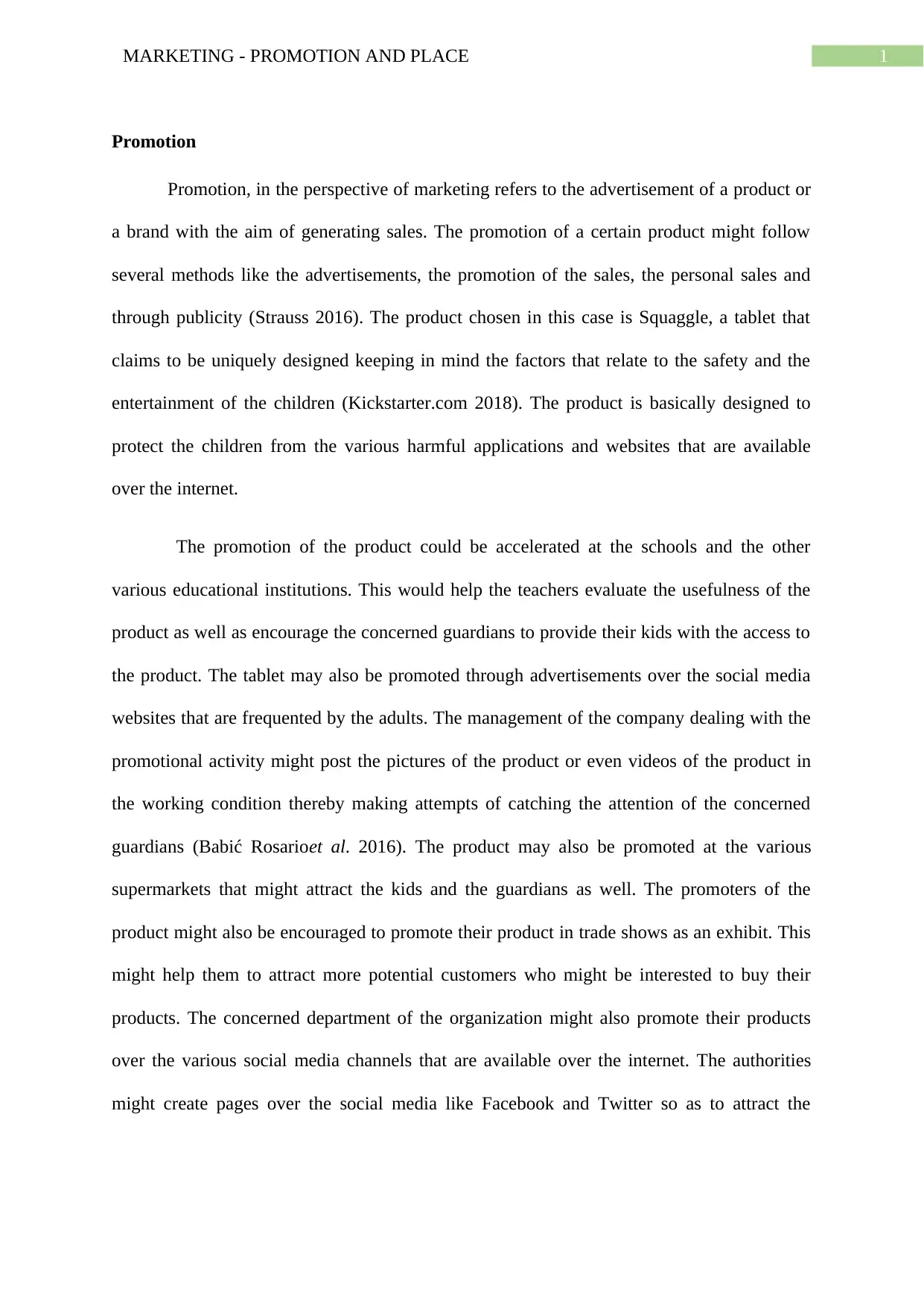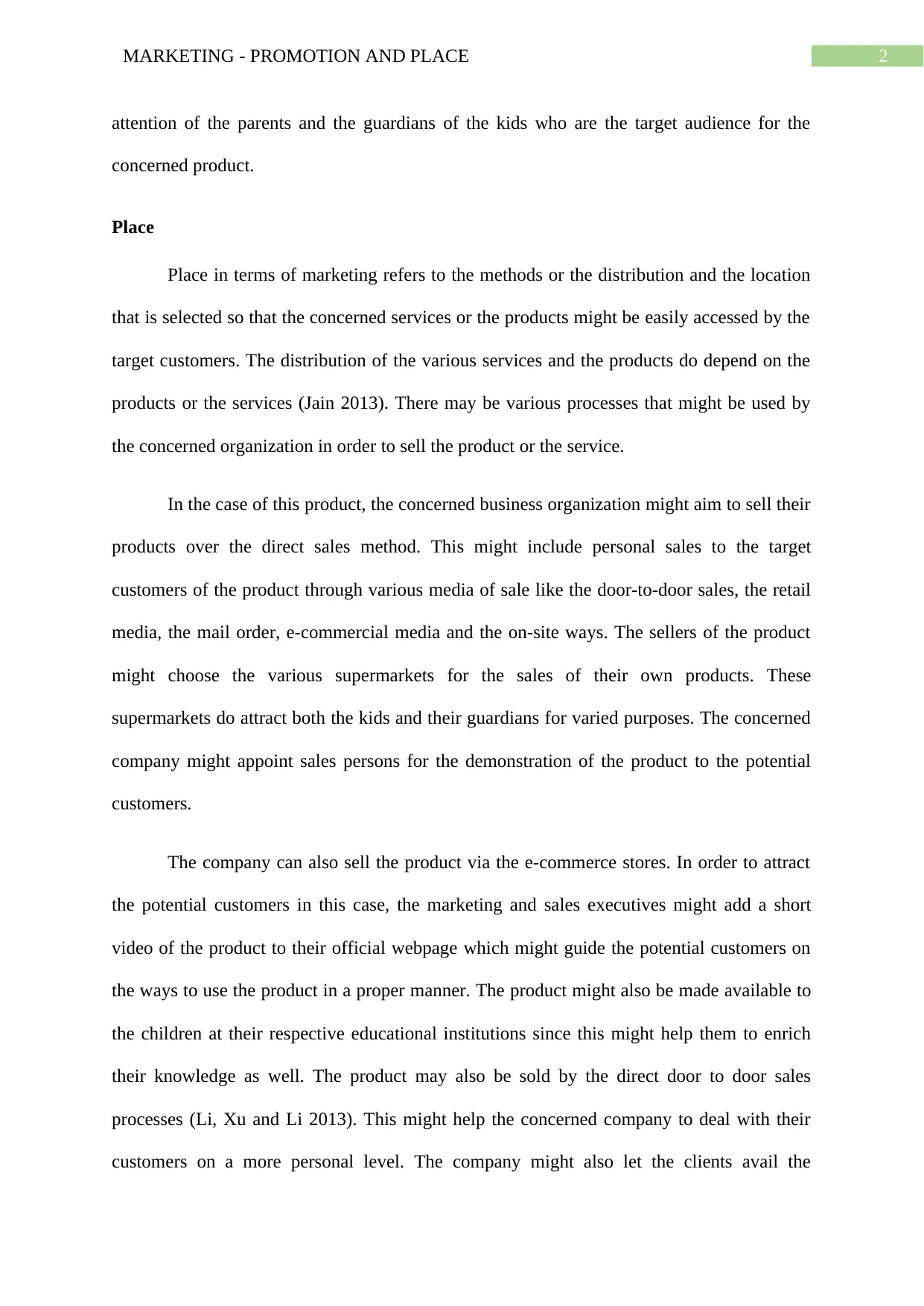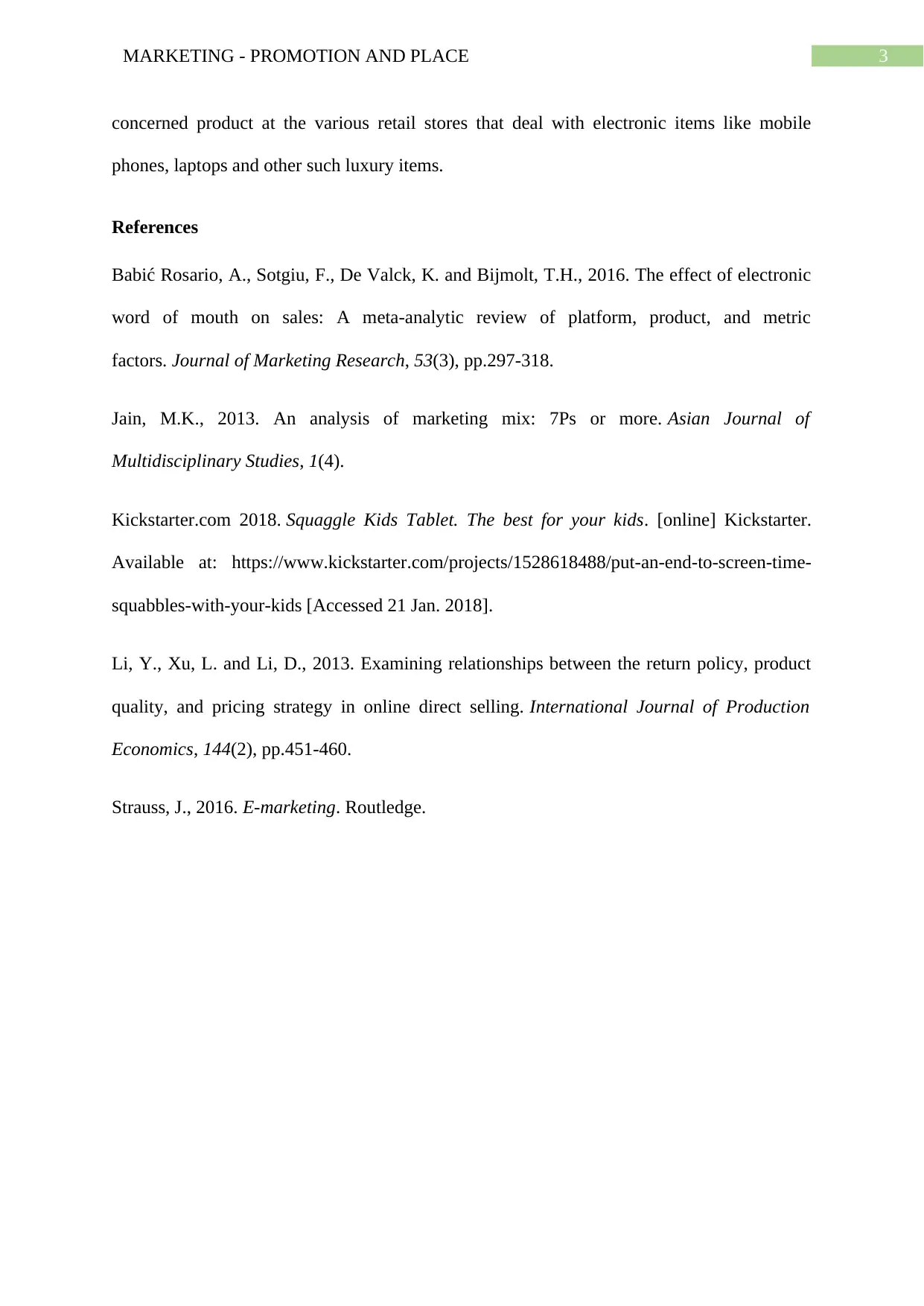University Marketing Report: Promotion and Place for Squaggle Tablet
VerifiedAdded on 2020/05/16
|4
|902
|68
Report
AI Summary
This report examines the marketing strategies for promoting and placing the Squaggle tablet, a product designed for children's safety and entertainment. The analysis covers various promotion methods, including advertisements, social media campaigns, and trade shows, targeting parents and educational institutions. The report also explores optimal placement strategies, such as direct sales, e-commerce, and retail partnerships, to ensure easy access for the target customers. References include academic research on electronic word of mouth, marketing mix, and direct selling strategies. The report suggests that the tablet can be promoted through schools, social media, supermarkets and trade shows. Moreover, the product can be distributed through direct sales, e-commerce stores, and retail stores. The report emphasizes the importance of a multi-channel approach to maximize sales and customer engagement. The overall goal is to enhance the product's visibility and accessibility to the target audience.
1 out of 4











![[object Object]](/_next/static/media/star-bottom.7253800d.svg)